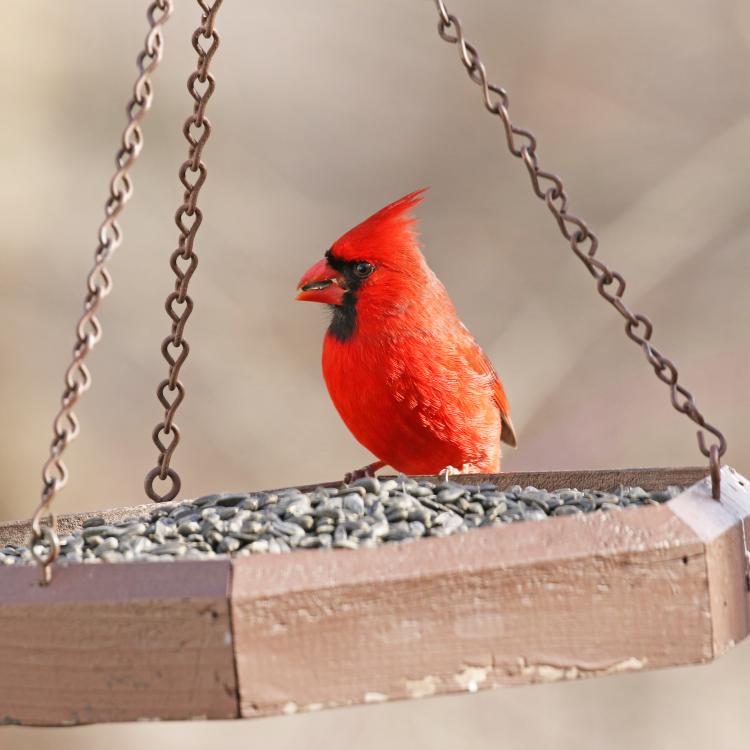Blue jay at a hopper feeder in winter
Mark Chamberlain, Consolidated Cooperative member
Q. Hi, Chip: My family and I are moving my mother, who has dementia, from out of state to a small house near us so we can better care for her. She enjoys watching wild birds, and I was wondering what type of bird feeders to put up and where to put them. Thanks for any help getting us started.
A. I’m glad to help, Mark, as birdwatching or any other type of similar activity is therapeutic for those people suffering from dementia. My mother suffers from it, as well, so I can relate.
My suggestion is to begin with three basic feeders, keeping them as simple and maintenance-free as possible. If you find that your mom can keep those feeders filled and enjoys tending them, possibly you can add a few more later. That said, I’d recommend a hopper feeder, tray feeder, and suet feeder.
Suet Feeder: These feeders are simple to erect. At any garden store, you can buy a wrought iron shepherd’s crook (get one with two arms) that you push into the ground. Also purchase two small, square, wire suet feeders and the suet cakes to put into the feeders. The suet cakes come in various flavors, but don’t be too concerned about which flavor(s) to choose, as they are made more to attract birders than birds. Buy whatever flavor and brand of suet cakes are cheapest, and wild birds will love you. Suet feeders attract various species of woodpeckers, as well as nuthatches. I’ve even had wintering bluebirds at my suet feeders!
Tray Feeder: An open tray or platform feeder can be as simple as one you make yourself or you can purchase one. A tray feeder is easy for birds to access, but the downside is that it is open to the weather, so the seed will get wet and freeze during the winter months. Wild birds will certainly eat wet seed, but they can’t eat seed that’s frozen under ice and snow.
This type of feeder, if relatively small, can be suspended from a second shepherd’s crook by using small chains. If your tray feeder is larger, mounting it on the top of a 4-inch x 4-inch x 7-foot treated wood post works well. If you bury two feet of the post in the ground, the top of the feeder will be at about the right height.
Hopper Feeder: The advantage of a hopper feeder is that it keeps birdseed dry and unfrozen during cold, wet weather. And the hopper-type lid is easily opened for filling the feeder from the top. If you purchase or build one of these feeders incorporating a Plexiglas front, your mother will be able to see the amount of seed in the feeder and know when she needs to refill it. Hopper and tray feeders attract seed-eating songbirds: cardinals, blue jays, tufted titmice, chickadees, etc.
For both my tray and hopper feeders, I feed exclusively black oil sunflower seed. Purchasing it in large bags helps with the cost, but realize that your mom most likely will not be able to lift much weight. You may have to carry the bag of seed into the house for her and empty it into a storage container such as a metal or plastic garbage can with a secure lid.
Lastly, but most importantly, space your three feeders about 10 feet apart and place them near a picture window where your mom will easily be able to see the birds without using binoculars. And if there are trees or shrubbery near the feeders to help attract birds, so much the better. Keep in mind, too, that natural food is most abundant during this time of year — late summer and early fall — so expect to attract more birds to the feeders later in autumn and into winter. Hope this helps…










